Al-Shabab’s economic strategy is dipping into new wealth, making the group ever more dangerous.
By late 2008, it was estimated that al-Shabab controlled most of south-central Somalia. Although it took years of putting forces together and placing footholds in the country, the international community and the Somali government had to do something to confront the ever-growing threat posed by the terrorist organization. An incremental build-up of an 18,000-strong African Union Mission in Somalia (AMISOM) and the Somali National Army (SNA), who were clashing horns with al-Shabab for years, finally went on the offensive against the group’s bases.
As a result, by late 2012, al-Shabab was finally dislodged from most major cities in southern Somalia, including Mogadishu, Kismayo and Baidoa. With those ground defeats, al-Shabab also lost economic resources, facilities and infrastructure such as ports, airports, taxation bases and extortion incomes. Robbing al-Shabab of its economic core seemed like a sure victory.
Victory Over Al-Shabab?
Consequently, the international community and Somali authorities felt smug and over-sanguine in their ability to roll back the onslaught of militants and mop them out from their hideouts. Evidently, the euphoric feeling was so high that some officials even fleetingly suggested to use lessons from the Somalia strategy and deploy them against Islamist militants in Mali.
That smell of victory against al-Shabab would turn out to be short-lived. Despite losing both territory and revenue sources, the group did not show any signs of defeat or decline. If anything, it demonstrated better leadership, superb adaptability to its new environment and recovery from its setbacks. Today, al-Shabab is arguably more focused and dangerous than at any other point in its existence.
Judging from the unprecedented scale of its penetrative attacks that rocked several prime institutions in the heart of government — such as the presidency, parliament and judiciary — al-Shabab in no way appears to be a spent force. In fact, it became a rather formidable enemy and force to be reckoned with. On May 24, Islamist militants carried out a brazen attack on Somalia’s parliament, leaving at least ten people dead.
Even in the aftermath of that recent Ethiopian incursion into Somalia — evicting the group from most of its strongholds — al-Shabab’s capacity of mounting and deadly attacks continue. The sudden blitz of terror that is taking place during this time of al-Shabab’s “weakened” state defies any easy explanation to most observers of Somalia.
Earlier, on February 22, the presidential palace was attacked by the group, whose stated mission was to kill or capture the Somali president. In addition, a ten-man commando unit blasted its way into Mogadishu’s main courts complex on April 23, 2013. Multiple tactics of car bombs, suicide detonations and long gun battles by assaulting combatants were used in all three attacks. Within that same period, al-Shabab was able to carry out equally devastating strikes at several well-protected locations in Mogadishu, including the United Nations headquarters, the airport and the Turkish Embassy.
In addition, al-Shabab’s infamous attack on September 21, 2013, at the Westgate mall in Nairobi and its bombings in Djibouti fall within this timeframe. The group also unleashed a wave of terror at public gathering places such as hotels and restaurants, and carried out wanton assassinations of members of parliament, journalists, scholars and scores of other individuals all over Somalia.
Once again, something had to be done. By this time, AMISOM was overstretched and could not possibly go after al-Shabab at its new bases. Inevitably, neighboring Ethiopia had to get involved. As an AMISOM member, Ethiopian troops spearheaded a massive and quick attack against militants on January 22.
Paradoxically, even in the aftermath of that recent Ethiopian incursion into Somalia — evicting the group from most of its strongholds — al-Shabab’s capacity of mounting and deadly attacks continue. The sudden blitz of terror that is taking place during this time of al-Shabab’s “weakened” state defies any easy explanation to most observers of Somalia.
A New Economic Strategy
Indicative of a new strategy in the making, al-Shabab did not show much appetite for defending its barracks in major cities under the group’s control. For instance, al-Shabab unexpectedly withdrew from its network of trenches in the Somali capital, Mogadishu. It similarly evaded entering battles with AMISOM and SNA forces, by withdrawing from its strongholds at various regional capitals such as Kismayu, Baidoa or Beletweyn.
The group had then retreated into the deeper hinterlands — villages and rural south-central Somalia — with its armaments and personnel almost unscathed. That consistent approach had all the trappings of a strategy-shift in the making. The group did lose territory, financial sources and populations under its control, but it also traded those for even more strategic territories, financial sources and population centers.
Moving into remote outlaying districts and villages gave al-Shabab a precious lull period, until the overstretched AMISOM received reinforcements and logistics. A more important aim of the new strategy was the creation of reliable and alternative economic resources. It was possible for al-Shabab to do just that.
Al-Shabab does not look like it will disappear any time soon. Its militants understand quite well that it took close to 20,000 AMISOM troops to expel them from major Somali cities and the capital.
Most villages and rural areas that al-Shabab relocated to happen to be the hub of Somalia’s agricultural produce and livestock herds. As part of its new economic strategy-shift from foreign dependence to local extraction, the group dips into that wealth in more ways than one. Telecommunication companies and money transfer systems that are dotted throughout those remote areas operate under the whims of the militant group.
Public transport operators, commodity whole-sellers, market vendors, private clinics and hospitals are now heavily taxed. Arbitrary monetary contributions for the group’s jihad are often demanded from the various local clans. Moreover, yearly tax levies and other forms of alms and fundraisings are imposed with religious fervor.
In addition, al-Shabab still has a public support base, though dwindling, and that continues to provide some financial contribution. In dealing with the rest of the public, however, it is not a matter of asking for contributions; it is a matter of forcible extractions. An environment of fear and subduing tactics is first created by often calling for forced conscriptions and by decrying fatwas for the group’s jihad.
Fatwas are an explicit way of saying that everyone’s lives and properties are to be used for jihad. Words such as apostasy, schism, spies and other death-carrying threats are repeatedly invoked. Scores of people are condemned to death and hanged for the purpose of achieving better compliance and setting an example. Al-Shabab finds it easier to collect outright extortion and protection money under constant fear and threats. Humanitarian organizations still operating in those areas allegedly pay hefty protection money to the militant group.
There have been reports that al-Shabab grows vast cannabis fields and other opium plantations. In mid-April, Somalia’s Middle Shabelle administration found and destroyed 300 hectares of land where “opium and marijuana were being grown.” Similar claims of marijuana fields have been made in the Lower Shabelle and Juba regions where the group used to hold control.
On April 26, an Australian warship patrolling the Indian Ocean intercepted a dhow laden with cargo containing a “tonne of heroine … hidden inside sacks of cement.” The commanding officer of the ship, Terry Morrison, added: “This is a major seizure which has removed a major source of funding from terrorist criminal networks.”
That one shipment alone was worth $125 million. An earlier heroine bust in that same area of operations was to the tune of 450kg. It is widely thought that drug plantations and smuggling, charcoal trade and elephant poaching are all part of the new economic rationale and financial sources of al-Shabab.
Foreign Revenue
Though we are seeing a radical localization of its economic resources, the group still continues to receive finances from abroad. Each dramatic attack the group undertakes ushers in payments from al-Qaeda, with whom it merged in 2012. By the same token, each successful drug transmission or smuggling trip for al-Qaeda is regarded as another way of earning money.
Al-Shabab’s relationship with al-Qaeda appears to have morphed from one of allegiance and spiritual closeness to service-based and contractual. The Somali group seems to have altered — if not changed completely — its all too familiar fatalistic narrative of selflessly and piously fighting for Islam. Of late, one seldom hears that sort of rhetoric from the group, apparently due to the fact the Somali public has increasingly become too heedless and disdainful of it.
Since all of its deceptive tactics and rhetoric has become obsolete, al-Shabab now resorts to sheer brutal force without feeling the need to explain itself. It kills its own in treacherous ways and most of its upper echelons have either ended up dead, or defected to the government side. Both its activities and new attitude connote a gainful shift to a better business model. Nonetheless, the actual nature of services that it does for al-Qaeda — terror and criminality — need further inquiry.
Cumulatively, these interlinked layers of relationships, economic activities, shifting strategies and operations are what make al-Shabab more professional, focused and dangerous. This new strategy has given the group enough time to purge its internal critics and to reinvent itself as a solidified, more secretive and united entity that falls under the full grip of leader Ahmed Abdi Godane. It has also given the group an unfettered and substantive financial base, among other things.
Consequently, al-Shabab does not look like it will disappear any time soon. Its militants understand quite well that it took close to 20,000 AMISOM troops to expel them from major Somali cities and the capital. They understand that expelling them from districts required an additional 20,000 troops and the inclusion of Ethiopia into the AMISOM mission. Mopping the militants out from Somalia’s inaccessible villages and countryside would require a further upsurge of soldiers and more logistics and resources.
Al-Shabab is not only a militant group, but also a by-product of lawlessness and criminality. That is why it fights against the return of law and order, and perpetuates this same lawlessness and criminality that created it. An integrated, holistic and determined approach is needed in fighting the terrorist organization. Al-Shabab, or others like it, will not go away without effective governance taking root in Somalia.
The views expressed in this article are the author’s own and do not necessarily reflect Fair Observer’s editorial policy.
Support Fair Observer
We rely on your support for our independence, diversity and quality.
For more than 10 years, Fair Observer has been free, fair and independent. No billionaire owns us, no advertisers control us. We are a reader-supported nonprofit. Unlike many other publications, we keep our content free for readers regardless of where they live or whether they can afford to pay. We have no paywalls and no ads.
In the post-truth era of fake news, echo chambers and filter bubbles, we publish a plurality of perspectives from around the world. Anyone can publish with us, but everyone goes through a rigorous editorial process. So, you get fact-checked, well-reasoned content instead of noise.
We publish 2,500+ voices from 90+ countries. We also conduct education and training programs
on subjects ranging from digital media and journalism to writing and critical thinking. This
doesn’t come cheap. Servers, editors, trainers and web developers cost
money.
Please consider supporting us on a regular basis as a recurring donor or a
sustaining member.
Will you support FO’s journalism?
We rely on your support for our independence, diversity and quality.



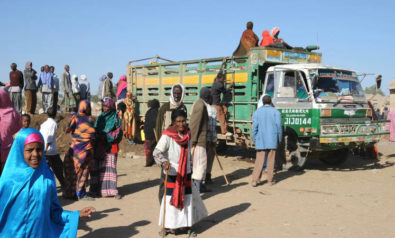
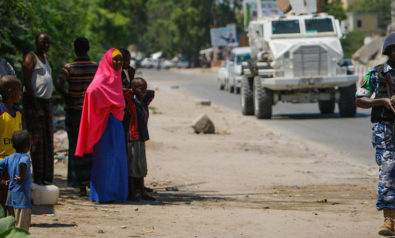
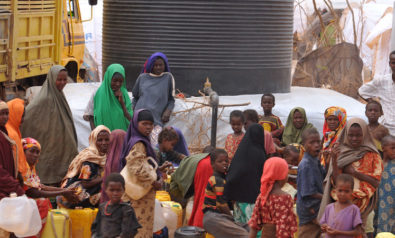
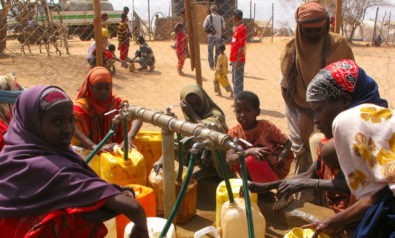

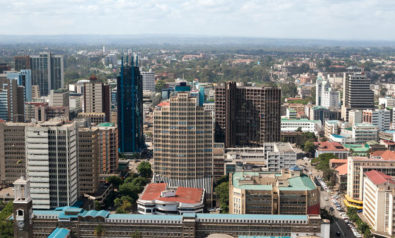
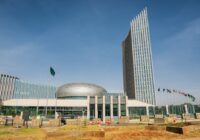
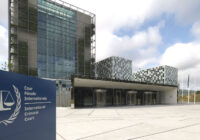


Comment